 W
WSalvador Abascal (1910–2000) was a Mexican politician and leading exponent of Mexican synarchism. For a time the leader of the National Synarchist Union (UNS), Abascal represented the orthodox Catholic tendency within the movement.
 W
WPrince Alexandru Cantacuzino was a Romanian lawyer and politician, a leading member of the Legionary Movement, and a close collaborator of Legionary leader Corneliu Zelea Codreanu. He notably devised a plot to overthrow Carol II, King of Romania, a plan that would later be taken over by Legionary leader and later Vice President of the Council of Ministers Horia Sima. Cantacuzino was killed on September 22, 1939, at the prison in Râmnicu Sărat, during a retaliation operation ordered by Carol II following the assassination of Prime Minister Armand Călinescu.
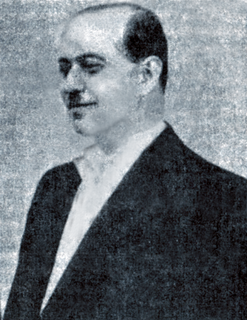 W
WGheorghe Alexianu was a lawyer, high school teacher and associate professor who served as governor of Transnistria between 1941 and 1944. In 1946, he was accused and convicted of war crimes, crimes against peace and crimes against humanity; he was sentenced to death by the Bucharest People's Tribunal, and was executed on June 1, 1946 by shooting.
 W
WRaphaël Alibert was a French politician.
 W
WNimio de Anquín (1896–1979) was an Argentine Thomist writer and fascist politician. Seeking to combine European models of fascism with his own attachment to the Catholic Church he led several movements and for a time had a strong following. Subsequently, however, he lost political influence and his later life was mainly focused on his academic career.
 W
WIon Antonescu was a Romanian military officer and marshal who presided over two successive wartime dictatorships as Prime Minister and Conducător during most of World War II.
 W
WCounter-admiral Gabriel Paul Auphan was a French naval officer who became the State Secretary of the Navy of the Vichy government from April to November 1942.
 W
WJoannes Antonius Baars was a leading Dutch fascist during the 1930s.
 W
WAlexandrina "Didina" Cantacuzino was a Romanian political activist, philanthropist and diplomat, one of her country's leading feminists in the 1920s and '30s. A leader of the National Council of Romanian Women and the Association of Romanian Women, she served as Vice President of the International Council of Women, representing the International Alliance of Women, as well as Romania, to the League of Nations. However, her feminist beliefs and international profile clashed with her national conservatism, her support for eugenics, and eventually her conversion to fascism.
 W
WUgo Cei was an Italian general and politician, who particularly distinguished himself during the Great War as brigade commander. In February 1935 he was appointed extraordinary Commissioner for honors for those who had died in war in Italy and abroad, and on March 25, 1939 he was made a Senator of the Kingdom. His decorations included the Knight Grand Cross and Officer of the Military Order of Savoy, three Medals of Military Valor and the War Cross of Military Valor.
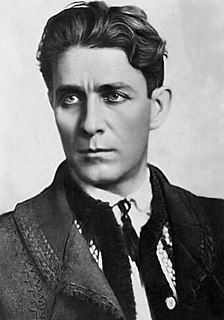 W
WCorneliu Zelea Codreanu —born Corneliu Zelinski and commonly known as Corneliu Codreanu—was a Romanian politician of the far right, the founder and charismatic leader of the Iron Guard or The Legion of the Archangel Michael, an ultranationalist and violently antisemitic organization active throughout most of the interwar period. Generally seen as the main variety of local fascism, and noted for its mystical and Romanian Orthodox-inspired revolutionary message, it gained prominence on the Romanian political stage, coming into conflict with the political establishment and the democratic forces, and often resorting to terrorism. The Legionnaires traditionally referred to Codreanu as Căpitanul, and he held absolute authority over the organization until his death.
 W
WRolf Jørgen Fuglesang was a Norwegian secretary to the National Unity party government of Vidkun Quisling 1940–1941 and minister 1941–1942 and 1942–1945. He was also President of the Kulturting 1943–1945.
 W
WLuigi Gatti was an Italian Fascist politician and civil servant, who served as prefect of Treviso and Milan during the Italian Social Republic as well as the last private secretary of Benito Mussolini.
 W
WPierre Gemayel, also spelled Jmayyel, Jemayyel or al-Jumayyil, was a Lebanese political leader. He is remembered as the founder of the Kataeb Party, as a parliamentary powerbroker, and as the father of Bachir Gemayel and Amine Gemayel, both of whom were elected to the Presidency of the Republic in his lifetime.
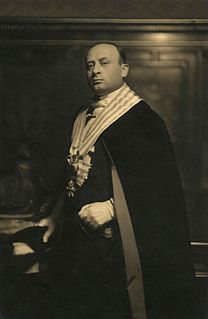 W
WGiuliano Gozi was Secretary for Foreign Affairs and de facto Fascist leader of San Marino from 1918 until 1943. He also held the role of Captain-Regent of San Marino 5 times between 1923 and 1942.
 W
WEmilio Grazioli was an Italian Fascist politician and prefect, High Commissioner for the Province of Ljubljana from 1941 to 1943.
 W
WAdnan Al-Hakim was the leader of the Najjadeh Party, an Arab nationalist party in Lebanon, for more than 30 years. He defined the politics of the party significantly. He was elected to parliament in 1956, and again in 1960 and 1968.
 W
WBernhardt "Ben" Klassen was an American politician and white supremacist religious leader. He founded the Church of the Creator with the publication of his book Nature's Eternal Religion in 1973. Klassen was openly racist, antisemitic and anti-Christian and first popularized the term "Racial Holy War" within the White Power movement.
 W
WAlexandros Koryzis was the Prime Minister of Greece briefly in 1941.
 W
WHans Krüger was a former member of the NSDAP party and other Nazi organizations who served as an SS judge in occupied Poland during the Second World War. After the war he became West German politician of the Christian Democratic Union (CDU). He served as Federal Minister for Displaced Persons, Refugees and War Victims of the Federal Republic of Germany from 17 October 1963 to 7 February 1964, in the First Cabinet of Chancellor Ludwig Erhard, as President of the Federation of Expellees from 1959 to 1964, and as a Member of Parliament from 1957 to 1965. He stepped down from cabinet amid controversy about his war-time background.
 W
WConstant Kusters is a Dutch politician. He is chairman of the Dutch Peoples-Union. This party has been mainly known for its Neo-Nazi conceptions.
 W
WGiuseppe Lombrassa was an Italian Fascist politician and soldier, State Undersecretary for Corporations in 1942-1943 and High Commissioner for the Province of Ljubljana from June to August 1943.
 W
WMichele Morsero was an Italian Fascist politician and soldier, prefect of the Vercelli during the Italian Social Republic.
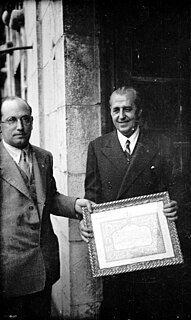 W
WPedro Muguruza Otaño (1893–1952) was a Spanish architect and Falangist politician.
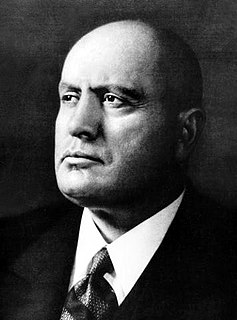 W
WBenito Amilcare Andrea Mussolini was an Italian politician and journalist who founded and led the National Fascist Party. He was Prime Minister of Italy from the March on Rome in 1922 until his deposition in 1943, and "Duce" of Italian Fascism from the establishment of the Italian Fasces of Combat in 1919 until his execution in 1945 by Italian partisans. As dictator of Italy and founder of fascism, Mussolini inspired and supported the international spread of fascist movements during the inter-war period.
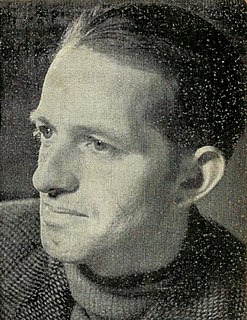 W
WGearóid Ó Cuinneagáin was an Irish language activist, nationalist and far-right politician born in Belfast, Ireland. He was the founder and leader of Ailtirí na hAiséirghe, a fascist party which sought to create a Christian corporatist state and revive the Irish language through the establishment of an authoritarian dictatorship in Ireland.
 W
WEoin O'Duffy was a Irish revolutionary military commander and police commissioner who later became a fascist leader, briefly leading Fine Gael before resigning, then departing for Spain where he led a brigade of Irish volunteers in the Spanish Civil War.
 W
WWilliam Dudley Pelley was an American writer, occultist, spiritualist and fascist political activist.
 W
WVidkun Abraham Lauritz Jonssøn Quisling was a Norwegian military officer, politician and Nazi collaborator who nominally headed the government of Norway during the country's occupation by Nazi Germany during World War II.
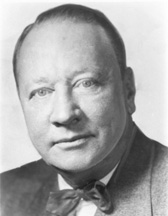 W
WRobert Rice Reynolds was an American politician who served as a Democratic US senator from North Carolina from 1932 to 1945. Almost from the outset of his Senate career, "Our Bob," as he was known among his local supporters, acquired distinction as a passionate isolationist and increasingly as an apologist for Nazi aggression in Europe. Even after America's entry into World War II, according to a contemporary study of subversive elements in America, he "publicly endorsed the propaganda efforts of Gerald L. K. Smith," whose scurrilous publication The Cross and the Flag "violently assailed the United States war effort and America's allies." One of the nation's most influential fascists, Smith likewise collaborated with Reynolds on The Defender, an antisemitic newspaper that was partly owned by Reynolds.
 W
WJames Saleam is an Australian far-right extremist and the chairman of the Australia First Party. Saleam has been described as a white nationalist, who has been a strong advocate of barring further immigration to preserve a "self-contained, predominantly white nation resistant to further immigration or watering-down of its culture". He has been observed wearing a swastika armband and associating with neo-Nazi skinheads.
 W
WVincenzo Serrentino was an Italian Fascist politician and civil servant, prefect of the Province of Zara from November 1943 to October 1944.
 W
WHoria Sima was a Romanian fascist politician, best known as the second and last leader of the fascist paramilitary movement known as the Iron Guard. Sima was also the vice president of the council of ministers and de facto co-leader in Ion Antonescu's National Legionary State. Sima had previously served briefly as State Secretary of Education under Gheorghe Tătărescu in 1940, and as a short-lived Minister of Religion and Arts in the government of Ion Gigurtu.
 W
WJesse Benjamin Stoner Jr. was an American neo-nazi, segregationist politician, and a domestic terrorist who was convicted in 1980 of the 1958 bombing of the Bethel Baptist Church in Birmingham, Alabama.
 W
WAbdolhossein Teymourtash was an influential Iranian statesman who served as the first minister of court of the Pahlavi dynasty from 1925 to 1932, and is credited with playing a crucial role in laying the foundations of modern Iran in the 20th century.
 W
WGeorges Valois was a French journalist and politician, born in Paris. He was a member of the French resistance and died in the Bergen-Belsen concentration camp.
 W
WEnrico Vezzalini was an Italian Fascist politician and civil servant, prefect of the Ferrara and later of Novara during the Italian Social Republic.